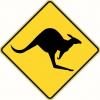You can also use the second plane as a marking gauge to lay out the tenon. Now that I think of it, I think Paul Sellers actually does just that in one of his videos about the topic -- that's probably where I got the idea from.
Using sharp things to mark a line is an old trick no matter what was holding the 'sharp thing.'
https://sawmillcreek.org/showthread.php?91256
jtk
"A pessimist sees the difficulty in every opportunity; an optimist sees the opportunity in every difficulty."
- Sir Winston Churchill (1874-1965)





 Reply With Quote
Reply With Quote


